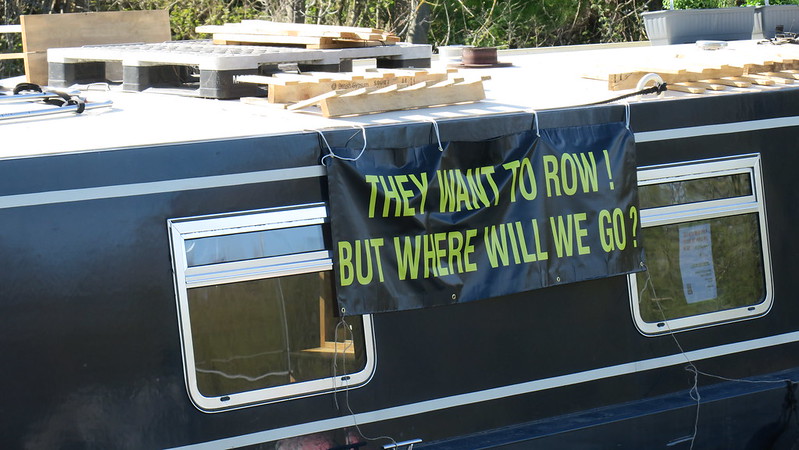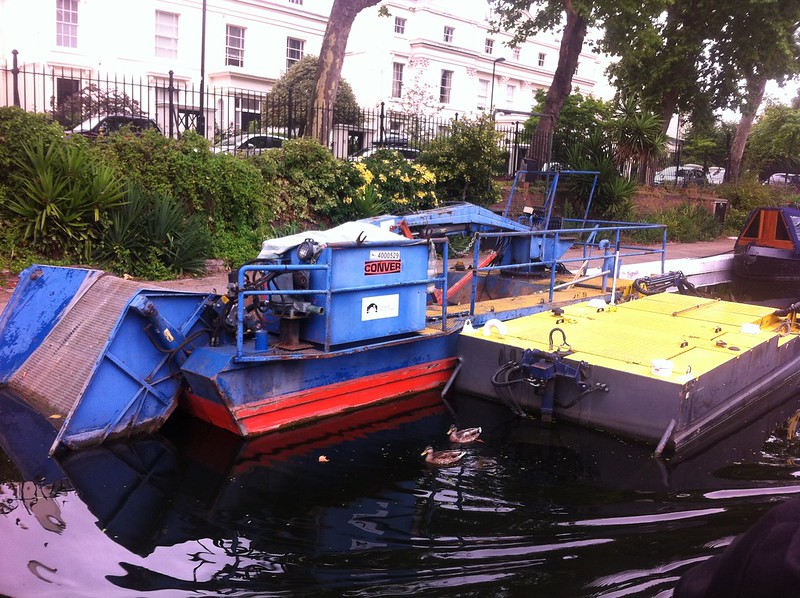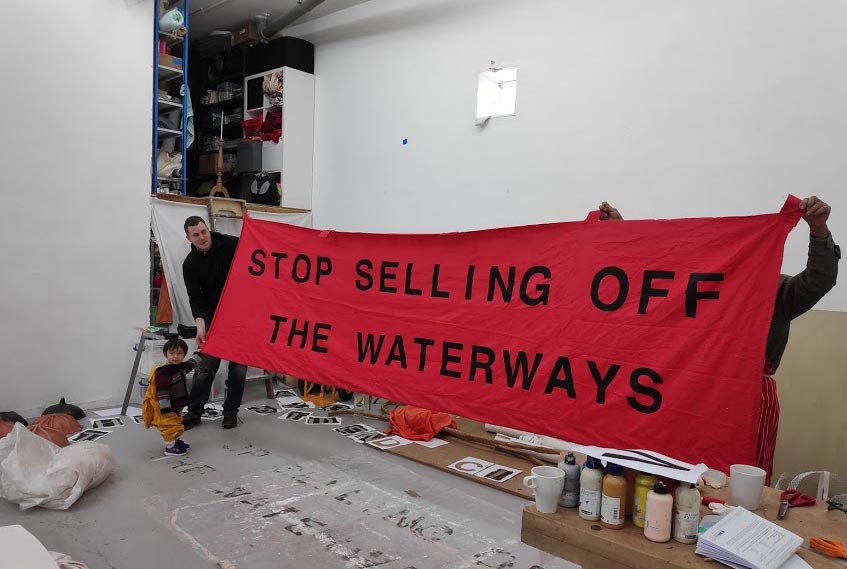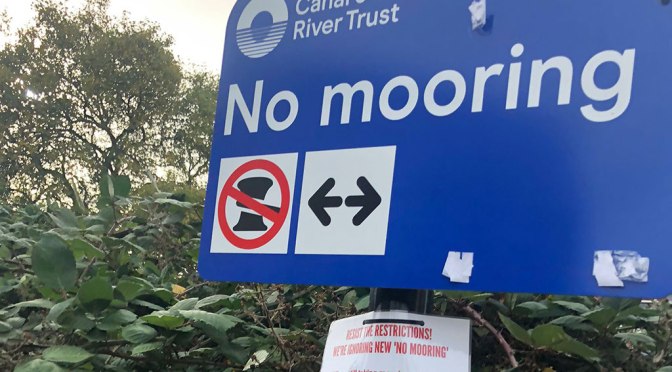Along the waterways, there are signs claiming the Canal & River Trust relies on donations to do its work. A quick look at their annual report shows donations account for a relatively small amount of the Trust’s income, at 3% for 2021/22. Boat licences and moorings, however, make up a fifth of the Trust’s annual income, at £44.5m for the last financial year.
Income and expenditure are recorded in millions (not thousands or pounds), projects are listed in the abstract without breakdown of costs, charts show vague approximations without quantifying true percentage. In the 176 page report; the word “boater” is mentioned only 8 times, “licence” 6, “mooring” 10.

The Canal & River Trust (CRT) is known to most if not all boaters who live on or use the waterways through London and beyond. The Trust operates as a charity and as such has charitable objectives, including to “preserve, protect, operate and manage inland waterways for public benefit… [and] improve the conditions of life for socially and economically disadvantaged communities who live nearby”.
The Trust may be best known among boaters for introducing more chargeable moorings, forcing through so-called “Water Safety Zones” that reduce available mooring spaces to boaters without a home mooring, and attempting to hike licence fees for boats without home moorings (again). It comes as no surprise, then, that the “financial strategy of the Trust is to maximise net income from all sources.”

So where exactly does CRT get its funds, and how does it spend the money?
Despite being a charity, and claiming to rely on donations, charitable giving from the public accounts for only £6.5m (3 percent) of CRT’s income. They spend £41.6m on fundraising.
£38.8 million came from charities in the form of grants from Historic England, the Active Travel fund, National Lottery, Green Recovery Challenge Fund and local Levelling up funds among others, often directed towards specific projects.
£300,000 was left to them in peoples’ wills.
Tax exempt on income and profits from investments, a large portion of the Trust’s annual earnings comes from return on its investment portfolio. Value has increased 26% over the past five years, from £800m to over £1.1bn (yes, billion). With “ground rents [being] very resilient holdings over the long term”, last year, returns contributed to a third of CRT’s income. In fact, the submission to the Charity Commission shows an additional £76.7m of investment gains were retained for future use. While the Trust looks around for places to squeeze out a penny, they might also consider digging a little deeper into their own pockets.
While external contractors are listed for reservoir inspection and property surveys, the cost of outsourced contracts is not. CRT has around 1,700 employees on the payroll and 3,700 volunteers, with 83 of its staff earning over £60k. Of those top earners, 10 earn more than £100k and 2 earn up to £250k… with community, volunteer and corporate groups removing “hundreds of tonnes of environmentally damaging litter and fly-tipping”, perhaps money might be better spent on bins.

A break-down of expenditure by region would be illuminating, as would some acknowledgement in the annual reporting of the fact that the CRT is the de facto local authority for several tens of thousands of people who live on boats as their primary residence. As they make improvement to reservoirs, water pumps, towpaths, tree clearing, dealing with contamination and pollution, bridges, slipways and aqueducts and are concerned with the upkeep of towpaths for the 9 million reported fortnightly visitors, bins and taps have no mention at all.
Additionally, NBTA London has recently submitted a Freedom of Information (FOI) request to CRT for the disclosure of spending on “Water Safety Zone” enforcement. With no apparent risk assessment or basis in evidence, could resources and effort be better spent elsewhere?
Boaters will be most familiar with the Trust’s licencing income stream, which made up £44.5m in the financial year ending 2022. Of this, around half comes from licences, rather than mooring permits and trade. You would expect the Trust to take more of an interest in the wellbeing of liveaboard boaters, given they contribute a fair sum to the Trust’s balance sheet. While an aim of the Trust is the improvement of conditions of life for those in the vicinity of its waterways, its proposed increase in licence fees appears to care less for those who live on them.

Trawling their high-level corporate finance and accounting jargon, boaters do not seem to figure in their calculations much at all. As their strategy is to “maximise net income” with the promise of being “unrelenting in their efforts to generate funds” it is likely the Trust will find other ways to pass on rising costs to boaters. The Chief Executive reported to the Board earlier this year that boater satisfaction remained on a downward trend. Making life better by water, perhaps, but harder if you live on it.
NBTA London needs your support to carry on our work. Please get in touch here if you would like to volunteer with us. Alternatively your donations are vital to us supporting boaters with their legal case work, campaign banners and other printed material as well as events. You can help us with your donations online here

